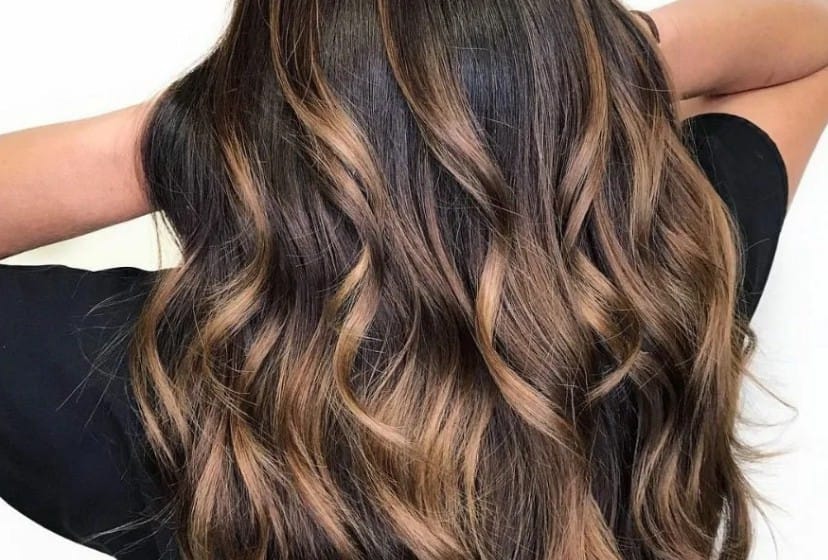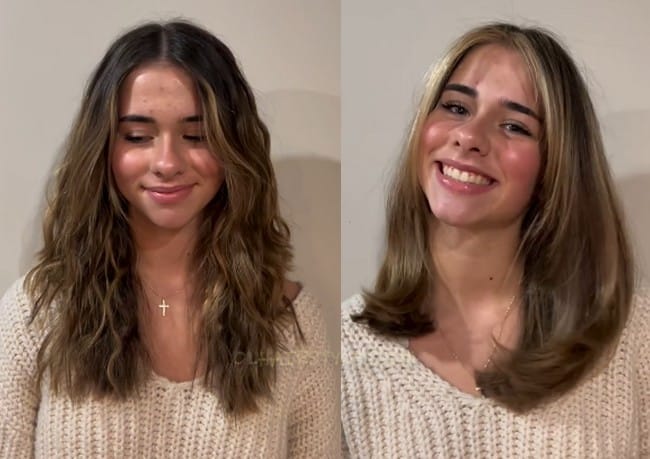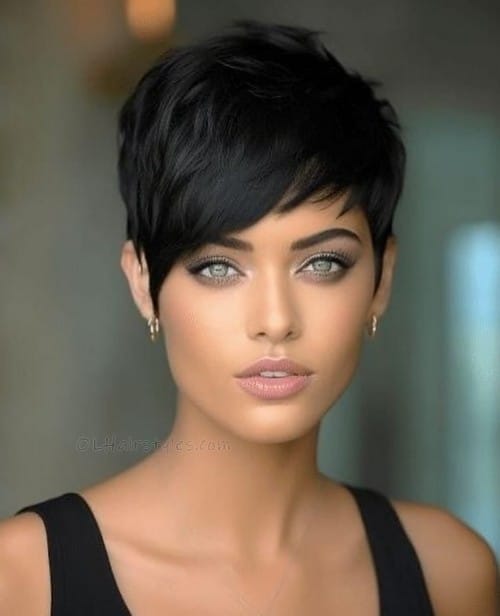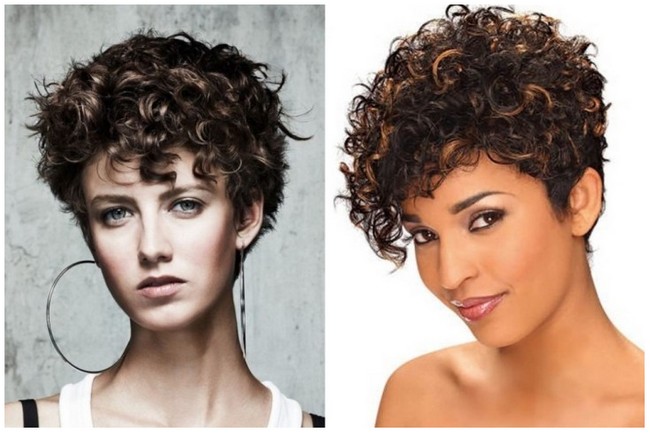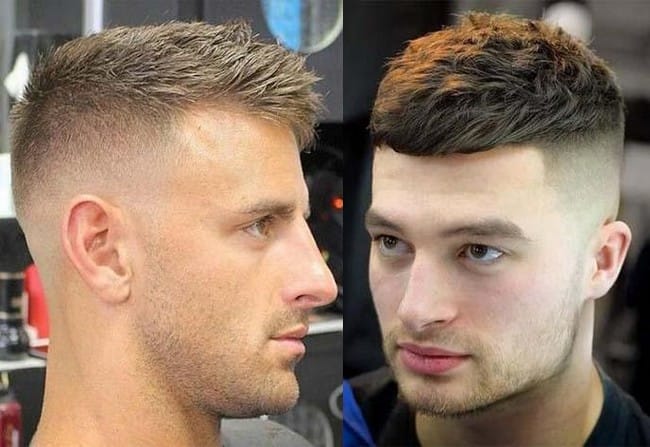The long plunging bob reinvents itself every season and continues to fascinate. It offers a variety of styles suitable for all women, regardless of their age. Whether you like it or not, this cut allows for a hairstyle that is both chic and dynamic, perfectly suited to fine hair.
- Which plunging bob to choose?
- How to maintain it?
Here are our tips and inspirations for adopting this ideal cut that brings volume and allure.
What is a long plunging bob for fine hair?
Long bob for fine hair
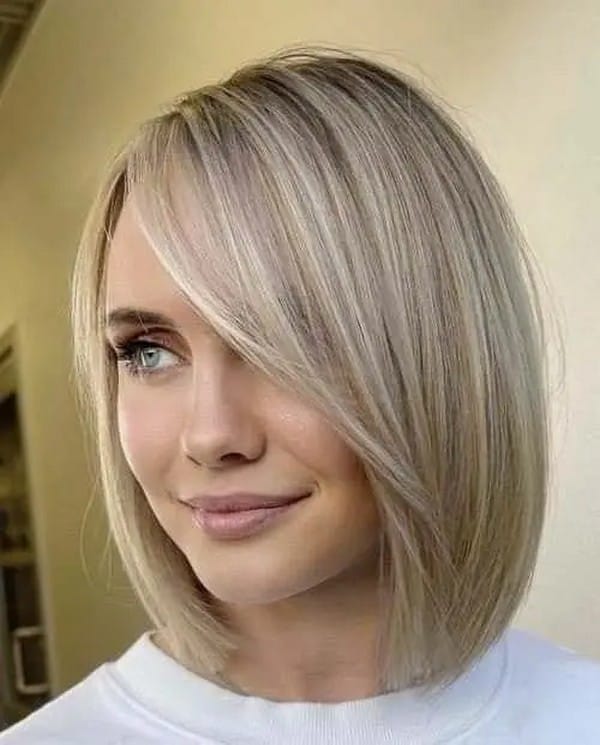
The plunging bob, known for its vintage and old-school side, is coming back to the forefront to seduce more and more women. It is characterized by asymmetrical lengths, with short strands at the back and a more flattering length at the front. Is it suitable for fine hair? Since it allows you to create the illusion of volume and density, especially at the hairline and on the sides. Versatile, the long plunging bob can be worn straight, wavy, with or without bangs, and adapts to all hair textures and almost all face shapes. Just find the variation that suits your body shape to enhance your look.
What face shape is the long plunging bob suitable for?
long plunging bob on brown hair

The long plunging bob for fine hair is undeniably a feminine and sexy cut. Here’s how to adapt it to the shape of your face to be on trend and enhance your look.
Triangular Face: Characterized by a narrow chin and a broad forehead, this face shape requires a cut that balances its curves while softening the forehead and emphasizing the lower part of the face. A long, plunging bob with face-framing bangs and waves is ideal.
Oval face: You can wear anything when you have an oval face. Short, long, straight, wavy bob… You’re spoiled for choice. Opt for waves to add more volume and softness to your look, and a fringe for a touch of modernity.
Rectangular face: For this face shape, the long, plunging bob is particularly recommended. A forward fade can be added to balance and soften the angular contours of the face.
Round face: This face shape is best suited to a long, plunging bob. Add some wispy strands to create the illusion of volume and long bangs for a more harmonious look.
Long Face: This face shape is enhanced by a shorter, defined bob. Avoid straight, sleek hair that further accentuates the length of the face.
You will have understood: that by adapting your plunging bob to the shape of your face, you will choose the style that suits you best.
How to style a bob for fine hair?
Long plunging bob on straight hair

To enhance the look of your plunging bob, especially if you have fine hair, a hair routine is essential. Follow the recommended steps :
- Apply a small amount of protective serum to protect your hair from the heat of styling tools.
- Use a flat brush to dry your hair, gently moving it up at the roots to achieve more volume.
- Once your hair is dry, apply a dab of styling cream to the ends and then use a flat iron to style your hair, creating waves inward. Christophe Robin, a hairdresser in Paris, recommends adding waves or soft curls to longer strands. For more volume, the expert advises using a fine-toothed comb to lift the roots, especially at the back of the head.
- If you have bangs, style them wavy to match the cut.
- Set everything with a light mist of hairspray, shaking the hair lightly to prevent it from becoming flat.
Finally, don’t forget to experiment with different looks. “You can tuck one side behind the ear to make the cut asymmetrical or accessorize with bobby pins to elevate the look. The secret to a successful job is to work with the natural shape and angles of the cut,” advises Joseph Maine.
How to maintain a long-plunging bob for fine hair?

This cut is not for those who prefer to space out visits to the hairdresser.
- The long bob for fine hair requires regular visits to the hairdresser to maintain its shape and structure. David Mallett, a hairdresser in Paris, gives a tip on this subject: “Cuts like this require a visit to the hairdresser every two months.”
- It’s important to consider how fast your hair grows. “How often you’ll need to go to the salon will depend on how fast your hair grows,” says hair expert Vernon Francois.
How to ask a hairdresser for a long bob for fine hair?

You have fine hair, but you want to opt for a long plunging bob. This timeless cut brings volume, but to obtain the desired effect, it is essential to carefully choose the type of plunging bob that will highlight the nature and texture of your hair.
Arm yourself with a few photos of long bobs and show them to your hairdresser so he can get a clear idea of the cut you want.
Also, tell your stylist how long you want the front and back sections to be. “The ideal place to start cutting is at the nape of the neck, under the occipital bone. The goal is to avoid a cut that’s too straight or too layered,” says John Nollet, a hairdresser in Paris.
How much does a long bob for fine hair cost at the hairdresser?

When you go to the hairdresser for a haircut, a recurring question always arises: is the price fair? Know that on average, the price of a women’s haircut is 32.7 euros. However, there can be significant price differences depending on the region and the type of hair salon.
20 Long Bob Ideas for Fine Hair Trending in 2024
You’ve decided to go for a plunging bob, and you’re right. It will give you a chic and elegant look in all circumstances. Explore our hairstyle suggestions for more inspiration; this way, you’ll be ready to adopt this cut in all its forms.
01: Long platinum blonde bob

Platinum blonde hair color is a must. Combined with a long, plunging bob, it never fails to attract attention, offering a captivating silhouette. We approve.
02: Long wavy plunging bob

This plunging bob deserves praise for its sensational length at the front. This is an ideal haircut for those who are hesitant to take the plunge and opt for short hair. The rich mix of light highlights and chocolate color further enhances this bold cut.
03: Deconstructed plunging square

This is a modern bob with textured, bouncy, dynamic layers and strands that beautifully frame the face. It’s the perfect choice for women who want to flatter their look with a contemporary cut.
04: Chocolate-colored long plunging square

This shoulder-skimming bob is simply sublime! With a uniform chocolate brown coloring, this lob gains dimension and depth. A striking choice for those who want a discreet and elegant look.
05: Long copper-colored plunging square

The combination of a plunging bob and copper coloring is a bold choice. We mix the elegance of this fascinating cut with the shine of copper, and we obtain a cut that has allure, ideal for women who like to stand out.
06: Long curly bob

If you have curly hair and want to adopt a long, plunging bob, it is advisable to thin out the mass of hair so that this cut is better controlled.
07: Long, straight, plunging square

The plunging bob suits all hair colors and textures. Styled straight, it gives a classic look, but it structures the contours of the face with elegance. We adopt it without hesitation!
08: Textured bob for fine hair

Fine hair is not dead yet. It also deserves a modern and chic cut like this plunging lob. We ask our hairdresser for a subtle gradient and rogue hair to frame the face and give dimension to this contemporary cut.
09: Messy plunging square

What’s better than a messy bob to add volume to fine hair? To do this, dry your hair with your fingers after applying a styling mousse and you’re left with a dynamic cut that brings your hair to life.
10: Stacked and curly bob

This haircut highlights the nape of the neck and structures the contours of the face. In addition, it emphasizes the volume at the top of the head and allows for better definition of the curls. Nothing better to energize fine and curly hair. We approve!
11: Long voluminous plunging square

A gorgeous feminine look that combines elegance and modernity. A modern cut, wide waves, a luminous balayage… Everything comes together to offer a fabulous plunging bob perfect for fine hair.
12: Long tousled plunging bob
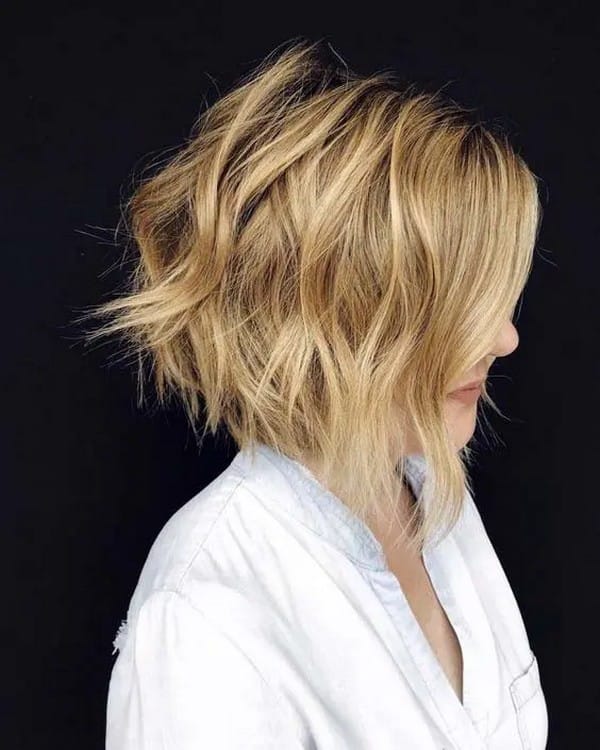
Paired with wide waves, this plunging bob is ultra feminine despite its tousled look which also adds a modern touch to the cut. The major asset of this hairstyle is the honey blonde coloring which is a revealing choice for any woman who wants to reveal her soft side.
13: Long bob with side parting

Do you have fine hair? So what? You can always enhance it with this magnificent, sensual cut, by opting for a side parting to add volume and bounce to your hair.
14: Deep bob with side bangs

A side fringe is perfect for a plunging bob, especially if you have fine hair. And if you have a round face, a side fringe can refine your features by giving the illusion of a more elongated face. Go for it without hesitation!
15: Long bob with light highlights

Never underestimate the power of waves that transform flat hair into voluminous mane. Add a platinum blonde balayage and you bring shine and a touch of glamour to your look. We approve of this sensual hairstyle!
16: Layered bob with a curtain fringe

Another alternative to the plunging bob: we choose a curtain fringe that adapts to all lengths. It dresses the forehead, adds a touch of mystery to the look, and gives movement and dynamism to the hairstyle. An ultra sexy and trendy look, without a doubt.
17: Wavy plunging square

A long bob is always flattering for a round face. Whether the hair is straight, curly, or wavy, it helps balance out a round jawline. By adding wavy strands, the result further enhances the look with a “beach-fresh” effect. Ladies, this effect is completely achievable and holds better on long hair, even if it is fine. A styling mousse to apply to your strands, and you’re done.
18: Long bob with asymmetrical bangs

An incredibly flattering cut if you have fine hair. The asymmetrical fringe dresses the eyes and frames the face to highlight its features. You will have an ultra-trendy hairstyle, like the perfect beauty that you are. Don’t be afraid to combine trend and sensuality in the same hairstyle.
19: Slightly plunging bob with tapered bangs

You have fine hair but you want to keep some length. It’s entirely possible with this plunging bob. This cut is even more sublime if you have a round or square face. And why not add a tapered fringe? You will get an airy and trendy hairstyle.
20: Long, plunging, Venetian blonde bob
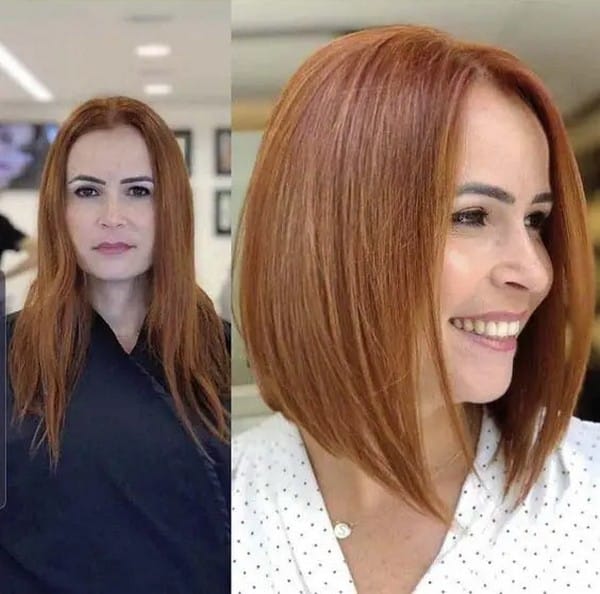
This plunging bob gives volume and dimension to the hairstyle. On Venetian blonde hair, this bob will have more character. Flamboyant hair and a distinguished cut—that’s what this ultra-trendy hairstyle promises
Before you reach for the scissors, ask your stylist to show you the different options to explore with the final style of the cut.
The long bob is an ideal choice for straight or wavy hair. To maintain the shape of this cut, it is advisable to keep the hair moisturized to maintain the dimension of the hairstyle.
The plunging bob is not suitable for very curly or frizzy hair because it will have a ball effect, especially if it is short.
FAQ
How often should you cut a long bob?
On average, a long bob can last 6-8 weeks before needing a refresh to maintain its shape and prevent the layers from getting too long or losing their volume.
How to add volume to fine, flat hair?
The lack of volume in fine hair comes from the thinness of the hair fiber from root to tip. This thinness of the hair tends to make the hair flat and without volume. The best solution is to opt for the right haircut. Some short cuts can provide more volume. We opt for a short bob with a slight layering to give more pep to the lengths.
What hair color for very fine and flat hair?
Fine, flat hair needs volume and density, and coloring can help with this. Warm highlights in brown hair or light streaks in blonde hair will give more dynamism and depth to the hair look.
When to wash fine hair?
Fine hair with a tendency to be oily can be washed 2 to 3 times a week. Avoid washing too frequently, which can damage the scalp, make the hair dry and make it more oily.
How to moisturize fine hair?
Although your hair is fine, it is essential to moisturize it without weighing it down by using suitable products, such as a conditioner. Make sure to moisturize only the lengths and ends. Also, favor light and non-greasy treatments. We choose formulations based on Aloe vera gel which moisturize fine hair while giving it lightness.

